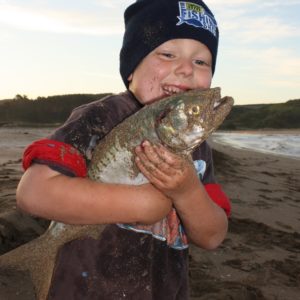After the snapper decision, we reviewed hundreds of pages of Ministry reports and documents and we’ve planned our next steps to continue to improve the future of Snapper 1.
Increased release mortality is one issue that will need to be addressed sooner rather than later, because as of 1st of April 2014 recreational fishers will be fishing to the new 30cm minimum size limit and a reduced bag limit of seven.
While many of you are keen, there will be no legal action from LegaSea. While Nathan Guy’s decision may be unfair it largely conforms with the Supreme Court judgment, that the Minister has the discretion to make a political decision.

We believe we can make a bigger impact by focusing our resources on other areas, including:
- Push for the interim 40% biomass target for snapper 1 to confirmed and adopted (the commercial sector will seek to reduce this but more fish in the water is better for everyone).
- Active participation in the Ministry’s new snapper multi sector action group that will develop a long term strategy for the fishery.
- Our aim is to ensure the stock is capable of meeting the reasonably foreseeable needs of future generations.
- Monitor and report on the implementation and results of the announced measures to reduce commercial waste. Intent is one thing, effective implementation is another.
- Launch a new education initiative to assist the fishing public to reduce release mortality – a LegaSea “Fish Smarter” guide.
- Call for specific Ministry action to be taken to address collapsing snapper stocks in the Bay of Plenty, including trawl exclusion zones.
- Call for a review of the commercial 25cm minimum legal size for snapper. Given the introduction of new smarter trawl technology, there is no reason why the commercial sector should continue to target and kill fish under 30cm.
One significant aspect in the post-decision report was recognition that the commercial fishery ‘asset’ is only a share of the TACC (Total Allowable Commercial Catch) and not the TAC (Total Allowable Catch). This serves our cause for fair and balanced fisheries management. It lets the commercial sector know they do not have a right to claim a share of the public’s fisheries resources. A great stake in the ground!
The Minister clearly signaled that future snapper allocations will favour the public share for some time to come. Breaking the shackles of proportional allocation sets an important precedent.
If commercial and recreational fishers can give snapper the chance to rebuild, and really look after the young fish coming through we will have a world class fishery on our doorstep and most of the measures announced will have a positive effect on future decisions.
It was your support that made a difference to this decision, so thank you. We’ve shown Nathan Guy and the Ministry that the people of New Zealand will not sit by and be treated unfairly any more and we will not let our fishery degrade. Bringing issues to light can result in increased focus on the best outcomes for the fishery and more balanced decision-making.
Coming into the election next year your support will be more important than ever. There are other fisheries areas that require our focus, and through snapper we all saw the political nature of decisions in key inshore fisheries. We intend to work with all willing political parties to help them develop strong fisheries policy.
As the public outreach brand of the New Zealand Sport Fishing Council we support and promote your interests for good management of our precious fisheries resources to ensure that there are abundant fisheries for future generations of Kiwis. By making a modest monthly contribution of $10 or more to LegaSea (that’s a coffee and some bait) we can apply the resources required to effectively lobby for better fisheries policy and management practices.





